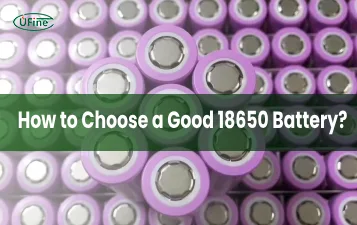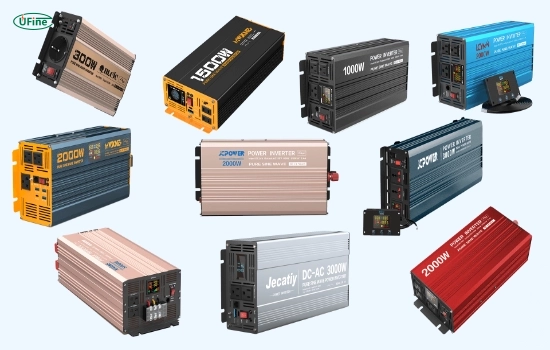Whether you’re an avid camper, a road trip enthusiast, or spend a lot of time in a mobile home, understanding leisure battery inverters can significantly enhance your experience. This comprehensive guide will walk you through everything you need to know about leisure battery inverters, from what they are and how they work to choosing the right one for your needs. Let’s dive in!
Part 1. What is a leisure battery inverter?
A leisure battery inverter is a device that converts the DC (Direct Current) power stored in a leisure battery into AC (Alternating Current) power, which is the standard power used by most household appliances. This conversion is essential for running electrical devices while you’re away from a traditional power source, such as camping or traveling in a motorhome.
Part 2. How does a leisure battery inverter work?
The primary function of a leisure battery inverter is to take the 12V or 24V DC power from your battery and convert it into 230V AC power. This process involves several key components, including:
- Input Stage: This is where the DC power from the battery enters the inverter.
- Oscillator Stage: This stage converts the DC power into high-frequency AC power.
- Transformer Stage: This step adjusts the voltage to the desired level.
- Output Stage: Finally, it converts the power to a stable AC output that your appliances can use.
Part 3. Types of leisure battery inverters
There are several leisure battery inverters, each with advantages and applications. Understanding these types can help you choose the right one for your needs.
Pure sine wave inverters
Pure sine wave inverters produce a smooth and consistent wave of electricity, similar to what you get from the grid. They are ideal for sensitive electronic devices and appliances, such as laptops, microwaves, and medical equipment. These inverters are generally more expensive but provide the cleanest power, ensuring your devices run smoothly without any risk of damage.
Modified sine wave inverters
Modified sine wave inverters are more affordable but produce a less consistent wave of electricity. They suit less sensitive devices like power tools and simple home appliances. While these inverters can handle most household electronics, some devices might not perform as well or may experience slight interference.
Inverter/charger combos
These devices combine the functionality of an inverter and a battery charger. They can convert DC to AC and recharge your battery when connected to an external power source. This dual functionality makes them highly convenient for long trips, ensuring your battery remains charged and ready for use.
Part 4. Choosing the suitable leisure battery inverter for your needs
Selecting the correct leisure battery inverter depends on several factors:
Power requirements
Determine the total wattage of the devices you plan to run simultaneously. Ensure your inverter can handle this load, plus a safety margin.
Battery compatibility
Ensure the inverter is compatible with your leisure battery voltage (12V or 24V).
Efficiency
Look for inverters with higher efficiency ratings to maximize the use of your battery power.
Size and portability
Consider the size and weight of the inverter, especially if space and mobility are essential.
Part 5. Leisure battery installation and safety tips
Proper installation and safety precautions are crucial for your leisure battery inverter’s efficient and safe operation.
Installation tips
- Location: Install the inverter in a cool, dry, and well-ventilated area.
- Wiring: Use appropriate gauge wires to handle the current load.
- Fuses and breakers: Incorporate fuses or circuit breakers to protect against overloading and short circuits.
Safety Tips
- Avoid overloading: Do not exceed the inverter’s maximum wattage.
- Proper ventilation: Ensure the inverter has adequate ventilation to prevent overheating.
- Regular maintenance: Check connections and clean components regularly.
Part 6. Typical applications of leisure battery inverters
Leisure battery inverters are versatile and have various applications. Here are some in-depth and easy-to-read insights into typical applications:
Camping and outdoor activities
When camping, having a power source can significantly improve your experience. A leisure battery inverter allows you to power camping lights, portable fridges, and other essential appliances. This means you can enjoy the comforts of home, such as cooking with an electric stove or charging your devices, even in remote locations.
RVs and motorhomes
A leisure battery inverter is indispensable for those who travel in RVs or motorhomes. It lets you run appliances like TVs, microwaves, and air conditioning. This adds convenience and ensures you have all the amenities you need while on the road, making your travels more enjoyable and comfortable.
Boats and marine applications
Boating enthusiasts can benefit from leisure battery inverters by powering navigation equipment, lights, and entertainment systems. Whether on a day trip or a more extended voyage, having a reliable power source ensures that all essential and luxury equipment on your boat functions properly, enhancing safety and enjoyment.
Emergency backup
In a power outage at home, a leisure battery inverter can serve as a reliable backup power source. It can keep critical appliances running, such as refrigerators, medical equipment, and communication devices, ensuring you stay connected and safe during emergencies.
Part 7. Benefits of using a leisure battery inverter
Convenience
Leisure battery inverters provide a convenient power source, allowing you to use your household appliances anywhere.
Cost-effective
Using a leisure battery inverter can save money by reducing the need for expensive generator fuel.
Environmentally friendly
They offer a greener alternative to generators, with no emissions and quieter operation.
Part 8. Leisure battery inverter troubleshooting common issues
Even with the best equipment, issues can arise. Here are some common problems and their solutions:
Inverter won’t turn on
- Check connections: Ensure all cables are securely connected.
- Battery charge: Verify the battery has sufficient charge.
- Fuse/breaker: Check for blown fuses or tripped breakers.
Inverter overheats
- Ventilation: Ensure the inverter is in a well-ventilated area.
- Load: Reduce the load or upgrade to a higher-capacity inverter.
Appliances not working properly
- Compatibility: Ensure appliances are compatible with the inverter type.
- Wiring: Check for loose or damaged wiring.
Part 9. Maintaining your leisure battery inverter
Regular maintenance can extend the life of your inverter and ensure reliable operation.
Cleaning
Keep the inverter clean and free of dust and debris.
Inspection
Regularly inspect connections, wires, and components for signs of wear or damage.
Testing
Periodically test the inverter under load to ensure it operates correctly.
Part 10. Understanding inverter specifications
When shopping for an inverter, understanding the specifications can help you make an informed decision.
Continuous vs. peak power
- Continuous power: The maximum power the inverter can supply continuously.
- Peak power: The short-term maximum power the inverter can handle, usually for starting appliances.
Efficiency rating
Higher efficiency ratings mean less energy loss during conversion.
Total harmonic distortion (THD)
Lower THD indicates cleaner power output, which is essential for sensitive electronics.
Part 11. FAQs
-
Can I use a leisure battery inverter with any battery?
While leisure battery inverters incorporate compatibility with various types of batteries, it’s crucial to ensure they match your specific battery type and voltage (e.g., 12V or 24V). Always check the manufacturer’s specifications before connecting an inverter to your battery. -
How do I determine the correct size inverter for my needs?
Calculate the total wattage of the devices you plan to run simultaneously to determine the correct size inverter. Add a safety margin (typically 20-30%) to this total to ensure the inverter can handle the load without overheating or shutting down. -
What is the difference between continuous and peak power ratings?
Continuous power is the maximum wattage the inverter can supply constantly. In contrast, peak power is the maximum wattage it can provide for a short period, usually to start appliances that require more power initially. Ensure your inverter’s continuous power rating meets or exceeds your total power needs. -
Can I leave my inverter connected to the battery all the time?
While leaving an inverter connected to the battery is generally safe, monitoring the battery’s charge level is essential. Prolonged use without recharging can drain the battery completely, potentially damaging it. Using an inverter/charger combo can help maintain the battery’s charge. -
Are leisure battery inverters safe to use indoors?
Leisure battery inverters are safe indoors as they are adequately ventilated and not overloaded. Ensure the inverter is placed in a well-ventilated area to prevent overheating, and follow all manufacturer instructions for safe operation.
Related Tags:
More Articles

Top Features of a Good 18650 Battery You Should Know
Learn what makes a good 18650 battery and how to choose the best one for your device. Includes safety tips, top brands, and usage recommendations.
Understanding the Types of NCR18650 Batteries
Explore NCR18650 battery types in-depth. Compare models like B, GA, PF, and BD, and learn their chemistry, specs, uses, and safety features.
Curved Battery Pack vs. Flat Battery Pack: A Comprehensive Comparison for Flexible Electronics
Curved battery packs vs flat: compare flexibility, use cases, and performance to choose the right power source for modern electronic devices.
Where to Buy 3.7 V Lithium Ion Battery 850mAh Nearby?
Where to buy a 3.7 V lithium-ion battery 850mAh nearby? Learn specs, how to choose the right one, and where to buy it fast from nearby or direct from makers.
CR123A 3.0 V Lithium Battery vs 16340 Battery: Difference explained
CR123A and 16340 batteries look alike but differ in voltage, safety, and use. Learn the key differences to choose the right one for your device.






